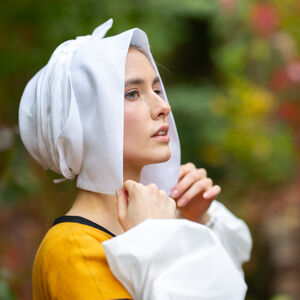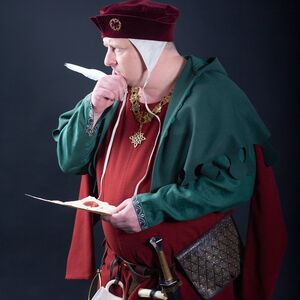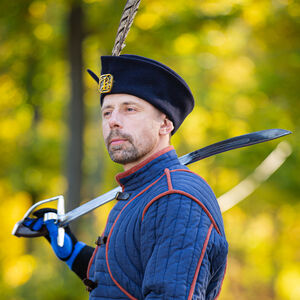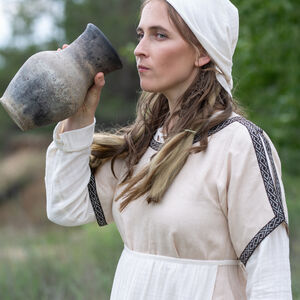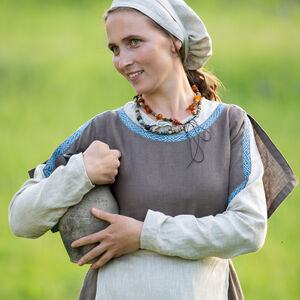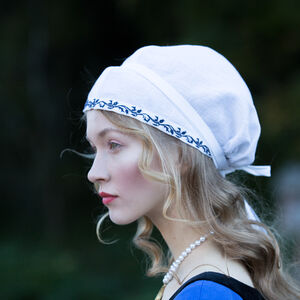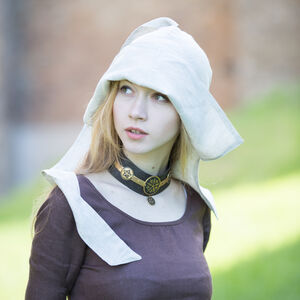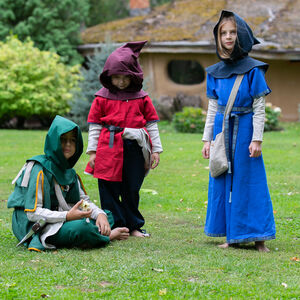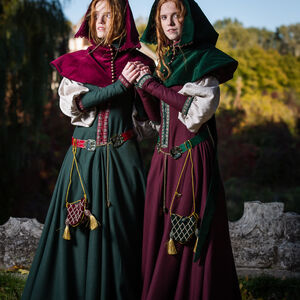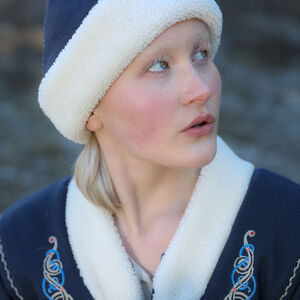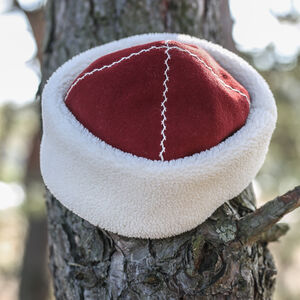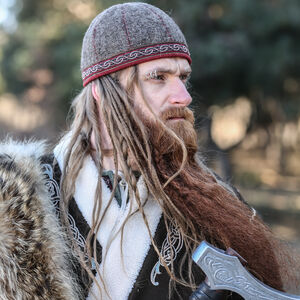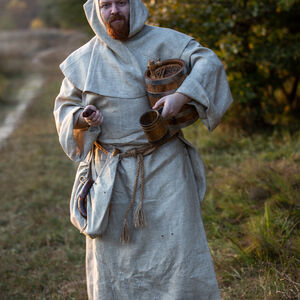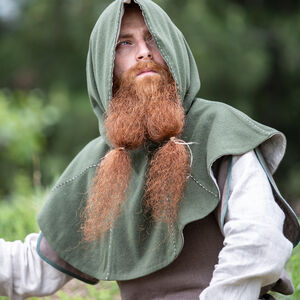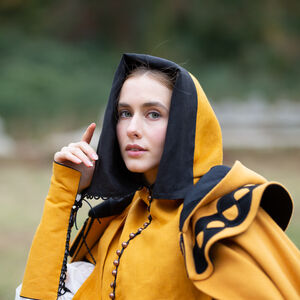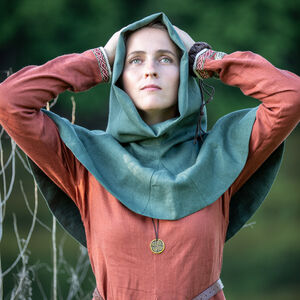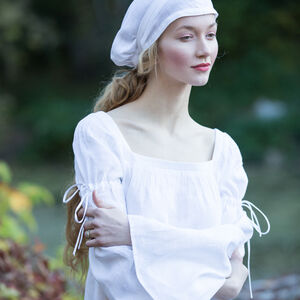Medieval Headwear For Sale
In ancient times prior to the Middle Ages, each headpiece performed its strongly practical purpose. Vikings’ hoods protected from moisture, Franks shawls prevented from the draughts and from the sun heat, while the crown - from cooking supper on your own. This trend has extended to the medieval headwear. In Western Europe, shape and color of the hat indicated the wearer’s occupation: doctor was usually wearing a beret, scholar opt for a black hat, and a beaver hat denoted notary.
Regular folks used to wear a cloth cap, named coif. Coifs were worn by soldiers and nobles as well, but the upper class would have to buy medieval headwear to wear on top. Hats varied, most were made of fabric or felt of a truncated cone shape, with or without brims. Awkward caps have caught the fancy of moralists and pastors, even though the head while wearing a coif resembled a large cabbage.
Another kind of common medieval headwear was a chaperone - a long-tailed hood with pelerine, which was used as a part of traveling dress. In the early 1300s someone offered to wear chaperone putting it on his head through the facial hole, so the tail and pelerine hung on both sides as an adornment. Since that moment its tail lengthened almost to the ground, making the wearer to wrap it around the neck in the manner of a scarf.
Medieval man treasured his hat; some fashionmongers even wore two hats at a time - the first on his head with the second behind his back. If you'd like to join their ranks, now is the time to check our medieval headwear store. Сomplement your period outfit with one of these gorgeous styles:
- silk veil
- woolen hood
- medieval chaperone
- veil hat
- Viking hood
Women’s medieval headwear
In those days, a woman could not walk bareheaded. Uncovered hair was generally considered indecent and wearing a headdress was strictly ordained by the church as a sign of reverence. So women used to wear shawls and veils. Thick headbands wrapped around head and chin were equally typical for 12-13 centuries. These modest accessories could be made of expensive, brightly colored fabrics with decorative trim specifically for the rich ladies. The veils were intended to conceal women's face which was declared to be the most dangerous snare, the 'sweet evil' subtly ruling the world.
Shop for the middle ages headwear, including period and fantasy models, online at armsreet.com. We've got all kinds of hats and hoods that will make you dreaming of distant centuries!
A Medieval hood: an iconic Middle Ages head piece
The medieval hood, also known as a coif, was a classic garment worn during the Middle Ages, covering a huge period roughly from the 5th to the late 15th century. This versatile piece of clothing served various practical purposes and reflected the social and cultural contexts of the medieval period and class.
Nobility often wore hoods adorned with furs and complex bordering and embroidery, reflecting their status. In contrast, lower classes typically wore simpler hoods that were versatile and functional. The hood could also signify one's occupation; for instance, certain tradesmen wore distinctive hoods that identified their profession or guild.
What is a chaperon hat?
The chaperon hat is a distinctive medieval headwear used in the XIV and XV centuries. The chaperon served a practical purpose, pretty much like a medieval hood, it was a garment made from wool, cotton, or fur, designed to protect from the elements. Characterized by its unique structure, the chaperone often included a long, flowing tail known as the "liripipe," which could be draped over the shoulder or wrapped around the head. The unique look of the Middle Ages chaperon made it a recognizable piece of historical costume.
A coif: a funny hat knight wore; and more than that
Traditionally, a coif is a close-fitting cap made of linen or cotton cloth, often decorated or embroidered, and primarily worn by women and children. This functional attire served multiple purposes, from modesty to protection from elements, and it has evolved in style and significance over the centuries. Have you ever tried to put on a helmet or a chainmail hauberk? Especially with chainmail, if you don't have anything between your head and a chainmail, you are going to be in a lot of trouble (and probably lose some hair) when taking your armor off. So, what did knights do? Pretty much as many modern fencers and other athletes, they wanted to have something on the head before putting the helmet on, and medieval coif was a simple and practical thing to wear, so now we have depictions of medieval knights wearing these funny medieval hats.
What Renaissance hats and headwear were like?
As art and culture flourished, so too did the representation of headwear in paintings and literature, reflecting an era deeply invested in the notion of individuality and societal status. Portraits from this period, such as those by artists like Raphael and Titian, often highlight the significance of headwear in shaping the perception of a person's identity and social standing. Also, an interesting aspect of the Renaissance was the growth of the middle class, so headwear only available for the noble became more common and popular among wealthy citizens.

